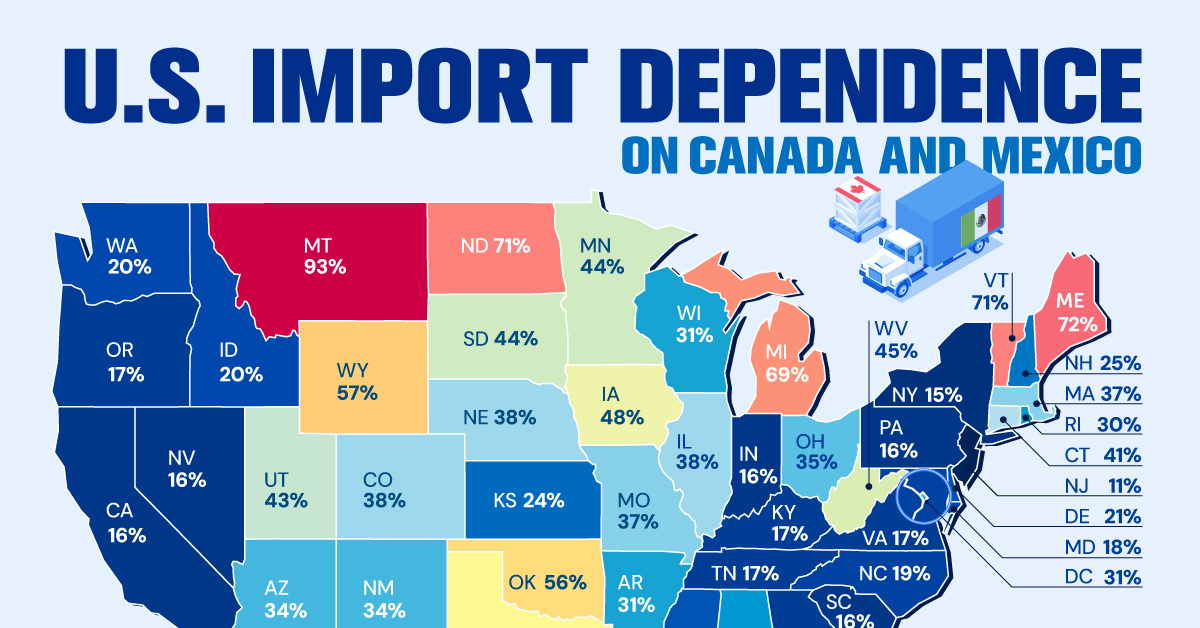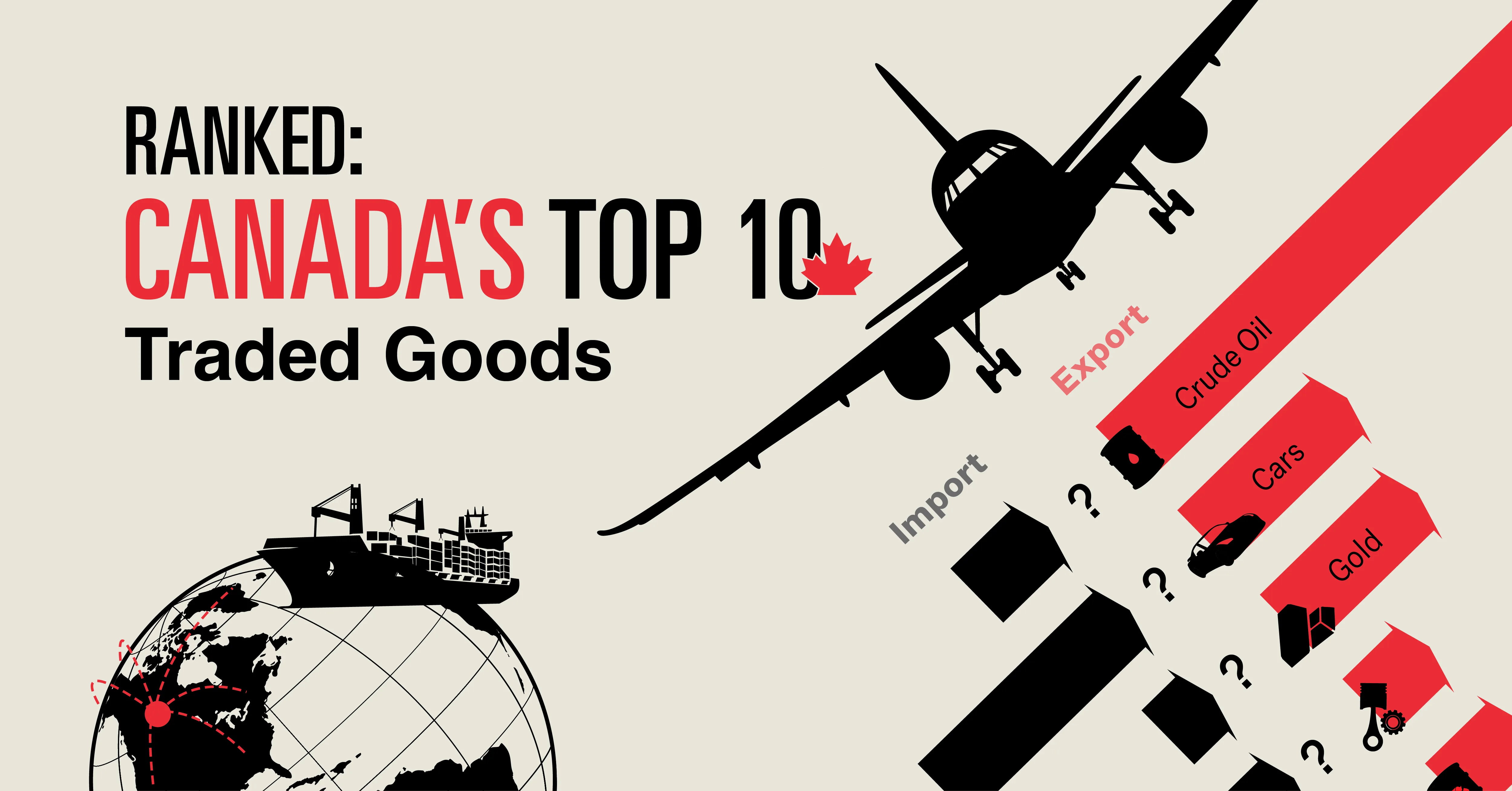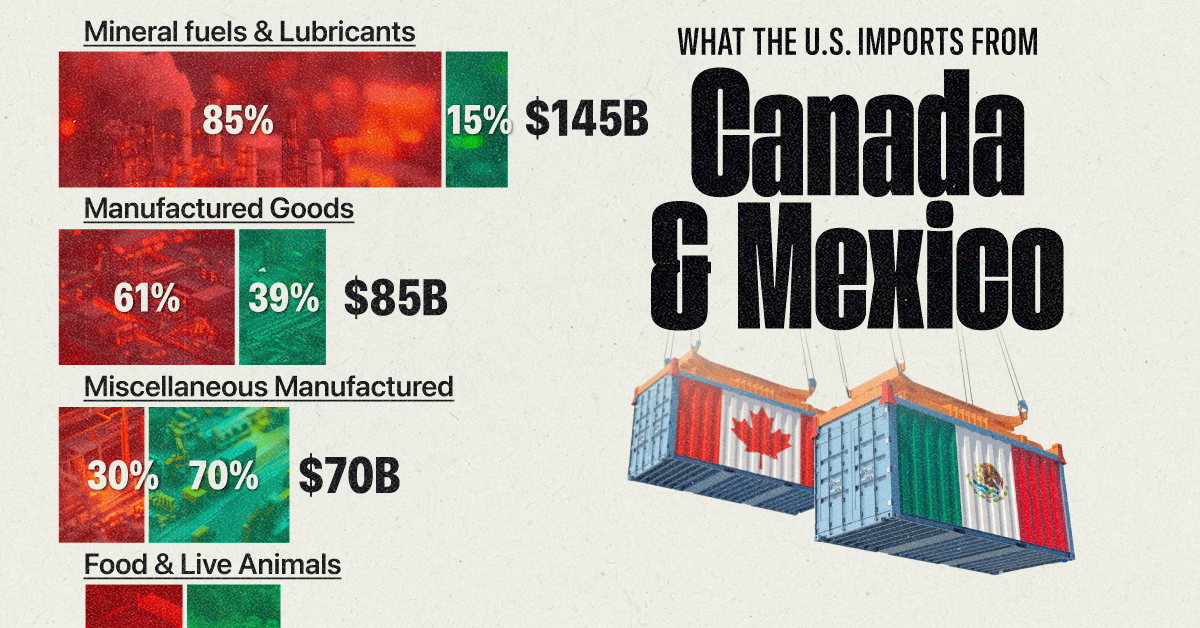DarkRange55
We are now gods but for the wisdom
- Oct 15, 2023
- 2,093
More than half of Canada's agricultural and food imports originate in the United States, the U.S. is also Canada's largest customer for farm exports. Because of its cold climate and short growing season, Canada imports a large share of its food from the United States, especially fresh produce and items that cannot be grown domestically year-round. Citrus fruits such as oranges, lemons, and grapefruits almost entirely come from California, Florida, or Mexico. Fresh vegetables like lettuce, broccoli, celery, and tomatoes are largely shipped north from the U.S. West Coast and Southwest, where growing conditions are ideal throughout the year. Canada also buys significant amounts of berries, grapes, apples, and processed foods including sauces, snack foods, and dairy alternatives from American producers. In return, Canada exports vast quantities of grains, meat, and processed foods to its southern neighbor. Wheat and canola from the Prairie provinces feed into the U.S. agricultural supply chain, while beef, pork, and poultry move both north and south depending on seasonal demand and processing capacity. Dairy trade is more limited due to Canada's supply-management system.
Canada is a major exporter of crude oil, natural gas, electricity, and lumber to the US. The forests of British Columbia, Alberta, and Quebec provide much of the softwood lumber used in U.S. homebuilding, despite recurring trade disputes over tariffs and quotas and these were all PRE-Trump II. Canada is also rich in minerals like nickel, copper, zinc, cobalt, and potash. Quebec's low-cost, hydroelectric energy has also made it one of the world's leading centers for aluminum smelting. Electricity is one of Canada's greatest strengths. Over 60 percent of the country's power is generated from hydroelectric sources, drawn from massive dam systems in Quebec, Manitoba, and British Columbia. Quebec's Hydro-Québec alone produces more electricity than any single U.S. state, even surpassing California and Texas, and exports vast amounts to New York, Vermont, Maine, and other parts of New England. Manitoba Hydro connects to the Midwest grid, supplying Minnesota and nearby states, while BC Hydro ties into the Western grid, sending hydro power to Washington, Oregon, and California. The electrical systems of both nations are physically interconnected as part of a shared North American power grid.

 www.visualcapitalist.com
www.visualcapitalist.com

 www.visualcapitalist.com
www.visualcapitalist.com

 www.visualcapitalist.com
www.visualcapitalist.com
Canada is a major exporter of crude oil, natural gas, electricity, and lumber to the US. The forests of British Columbia, Alberta, and Quebec provide much of the softwood lumber used in U.S. homebuilding, despite recurring trade disputes over tariffs and quotas and these were all PRE-Trump II. Canada is also rich in minerals like nickel, copper, zinc, cobalt, and potash. Quebec's low-cost, hydroelectric energy has also made it one of the world's leading centers for aluminum smelting. Electricity is one of Canada's greatest strengths. Over 60 percent of the country's power is generated from hydroelectric sources, drawn from massive dam systems in Quebec, Manitoba, and British Columbia. Quebec's Hydro-Québec alone produces more electricity than any single U.S. state, even surpassing California and Texas, and exports vast amounts to New York, Vermont, Maine, and other parts of New England. Manitoba Hydro connects to the Midwest grid, supplying Minnesota and nearby states, while BC Hydro ties into the Western grid, sending hydro power to Washington, Oregon, and California. The electrical systems of both nations are physically interconnected as part of a shared North American power grid.

Mapped: Which U.S. States Import the Most From Canada and Mexico?
With Trump's 25% tariffs on Canada and Mexico, which states are most dependent on their North American neighbors for imports?
 www.visualcapitalist.com
www.visualcapitalist.com

Ranked: Canada’s Top 10 Traded Goods
This graphic, created in partnership with Transport Canada, explores Canada's trade and its 10 most traded goods.
 www.visualcapitalist.com
www.visualcapitalist.com

What the U.S. Imports from Canada and Mexico
In 2023, imports from Canada and Mexico totaled $893 billion.
 www.visualcapitalist.com
www.visualcapitalist.com
